Blogs
Practical Insights & Latest Happenings
Don’t miss out on the latest trends and info on SEO, search engines, social media, and more.
March 15, 2024
mothasim
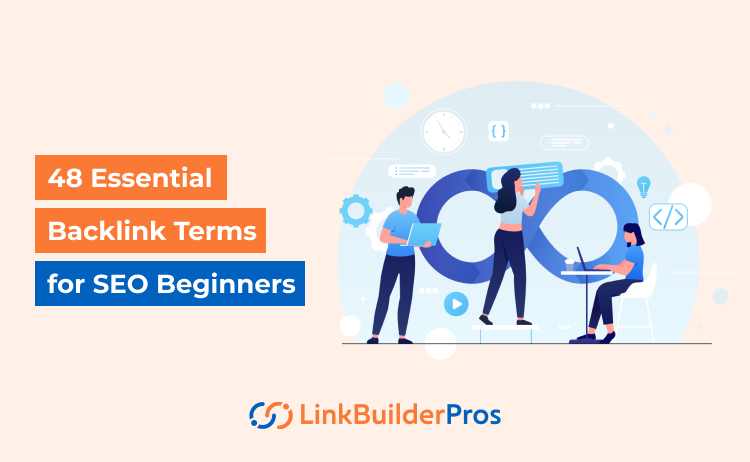
If you are just starting with SEO or link building and feeling overwhelmed by all the jargon, don’t worry! We are here to help you.
Here we have broken down the most important backlink terms that any beginner will find helpful; whether they are a website owner, a marketer, or a client looking for link building services.
Backlinks are links on one website that send users to another. They act like votes of confidence from the source site about the credibility of the linked site.

For instance, if a popular travel blog links to a hotel’s website, that’s a backlink that potentially boosts the hotel site’s credibility and rankings.
To illustrate, let’s imagine Forbes magazine links to your personal website in an article. Since that Forbes link points directly to your site, it serves as a backlink endorsement for your content.

Google analyzes these backlinks to help determine which sites offer worthwhile information on a given topic. More backlinks generally signal a site is more authoritative.
A backlink profile is the collection of hyperlinks from other websites that point to a specific website. It covers the various sorts of backlinks, anchor text, linking domain quality, and relevancy.
This profile directly impacts your Google’s rankings, because Google’s crawlers seek out these backlinks across the web to evaluate your site’s authority and popularity on a topic. More high-quality, relevant backlinks signal you should rank highly in results.
Factors like follow/nofollow links, anchor text phrases, and more contribute to your backlink profile. SEO marketing companies can optimize these to try improving your profile.
However, Google wants to avoid artificial inflation of rankings through backlink manipulation. The goal is to develop a diverse, natural-looking backlink profile, just like careful landscaping or subtle cosmetics.
This natural profile, earned through genuine links instead of tricks, can be the difference between ranking at the top or disappearing from search results.
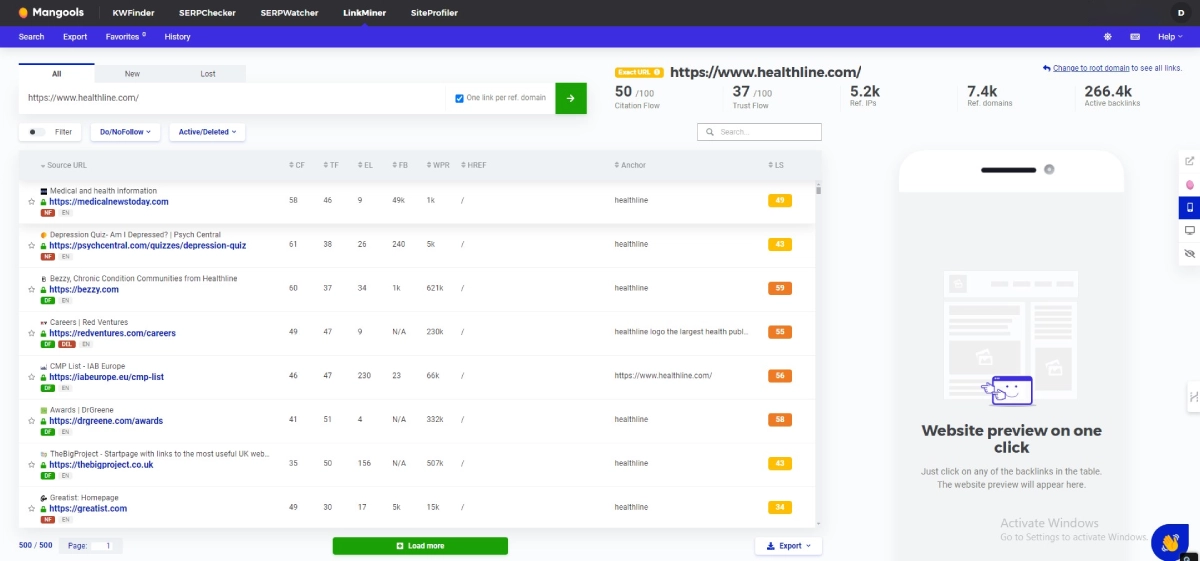
Link building is a critical part of SEO because it helps Google discover and rank your website pages. You can create great content, but if there are no external links directing Google to that content, it will likely go unseen.
Google needs links from other sites to find your pages. More links are better, but link quality also matters significantly. Not all links have equal value, and some can even negatively impact your site.
In essence, link building involves getting reputable external websites to link back to your site. This summary provides a high-level overview of why link building is important for rankings.
Further articles can offer more in-depth guidance on best practices for building quality links effectively to improve SEO. The key is getting links that truly reflect your site’s merit rather than low-value or manipulative links.
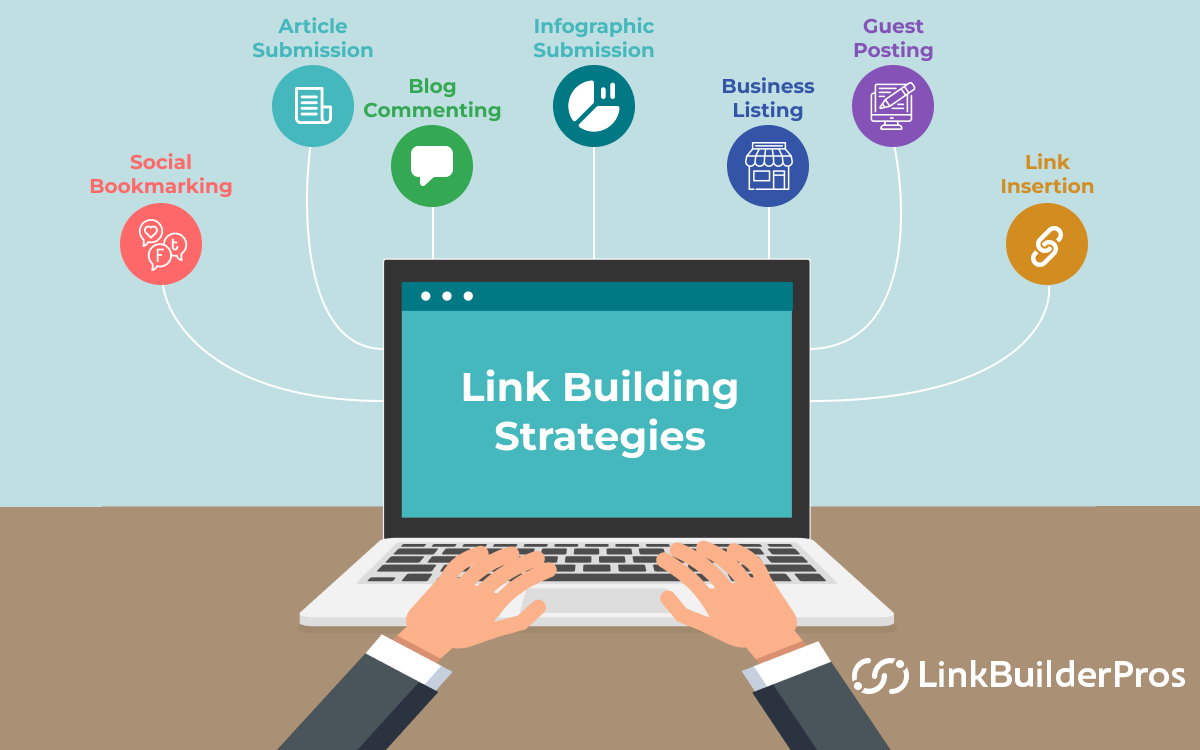
Link equity is also known as link juice and refers to the ranking power or value that gets transferred from one webpage to another through links. When Site A includes a link to Site B, some of Site A’s authority and value passes to Site B through that link.
The amount of link equity passed depends on things like how authoritative and relevant Site A is, how relevant the specific content Site A links to on Site B is, and how many other links Site A has.
More authoritative sites with fewer links pass more equity. Gaining links from reputable sites with high trust and relevancy scores transfers more ranking power versus low-quality links.
The goal of getting quality links is to build link equity that boosts your rankings.
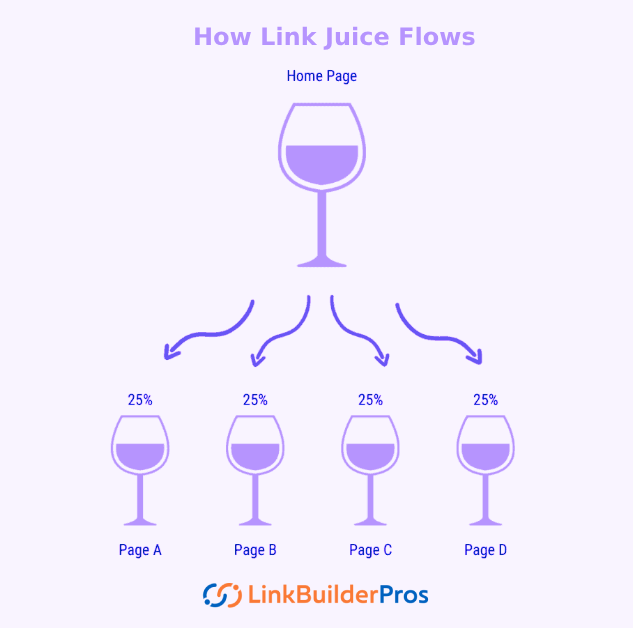
Backlinks that come from other external websites linking to your site are referred to as referring domains. In other words, referring domains are the original websites that contain and create the backlinks pointing to your site.
While backlinks are the actual hyperlinks themselves, referring domains are the external sites housing and generating those links back to your pages.
So for example, if Site A, Site B, and Site C all have links directing users to your website, those three sites would be considered your referring domains.
Any external website with at least one link leading to your content counts as a referring domain. Building backlinks from a diverse range of quality referring domains is important for SEO.
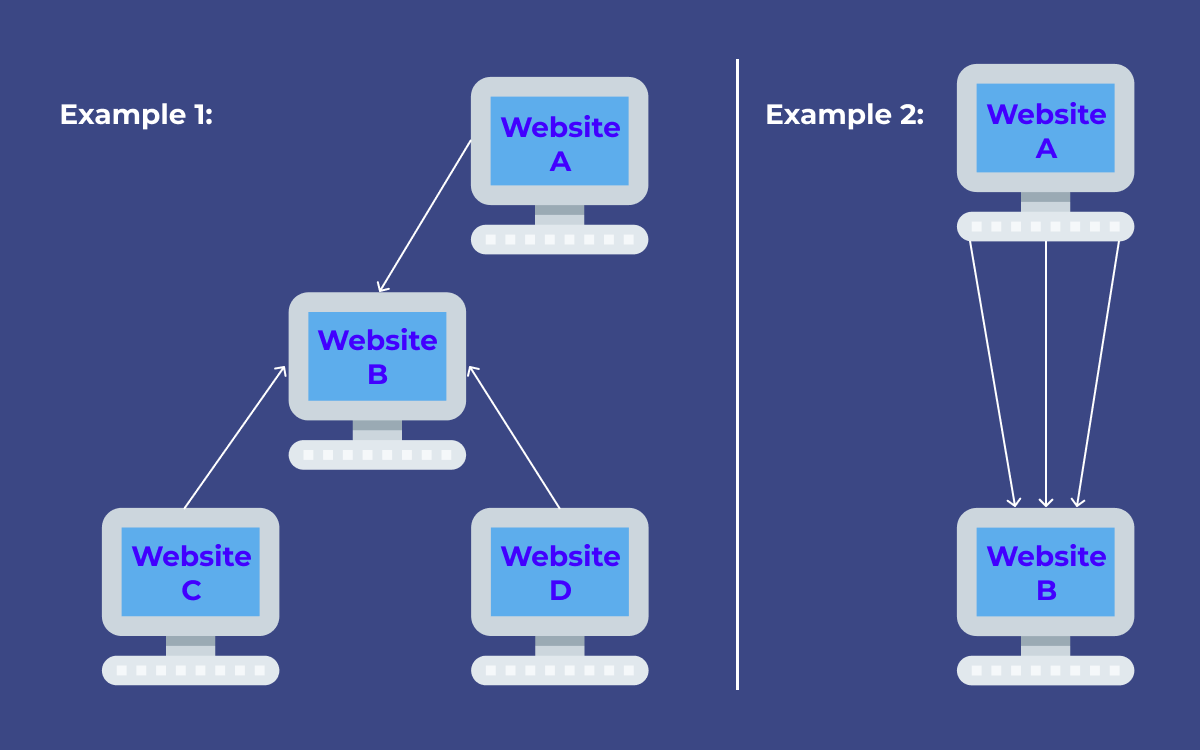
A referring backlink refers specifically to a backlink that comes from an external website linking back to your site and attributes the source of the traffic being referred.
When visitors click on a referring backlink to your site, data is usually passed along indicating where the traffic originated. This allows you to see which specific external sites are directing traffic to your pages through their backlinks. Ahrefs, SEMrush and Google Search Console analyze referring backlinks.
For example, if Site A has an article that links to your website, that would be considered a referring backlink. When users click that link from Site A to your site, it would be logged as a visit referred from Site A due to the attribution.
Referring backlinks, therefore, are backlinks that help track the original referrer or source of the incoming traffic to your site through links on external pages. Analyzing referring backlinks can provide valuable insights for SEO and determining which sites are good sources of quality backlinks driving visits.
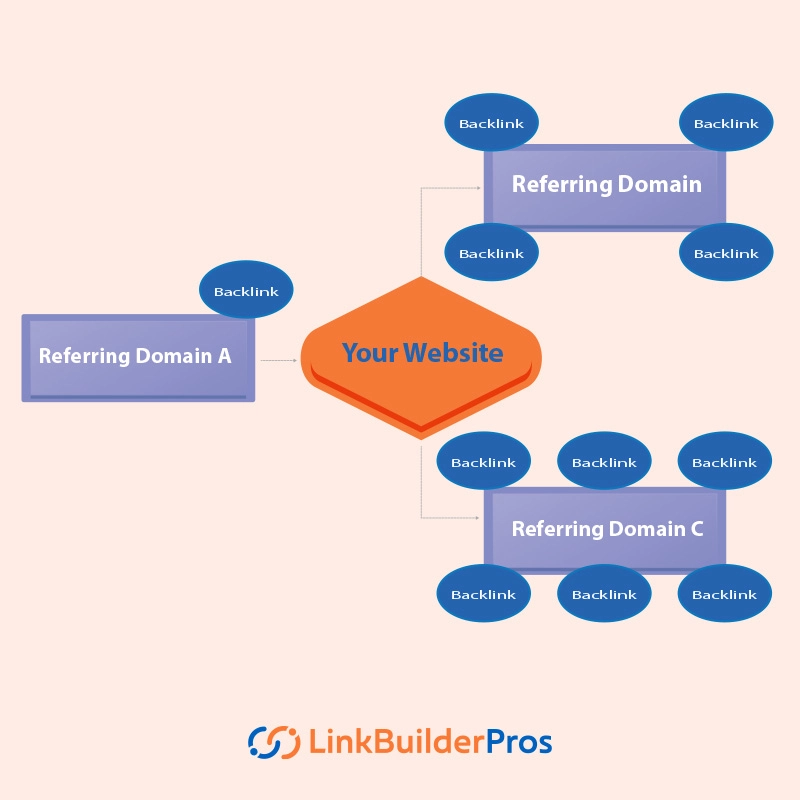
A referring page is the specific web page that contains a link directing users to your website. When someone clicks on a link to your site from another page, that page they originated from is considered the referring page.
For example, if an article on Site A contains a link to your website, that particular article page on Site A is the referring page. It’s the specific external page that refers traffic to your site through its link.
Tools like Ahrefs and SEMrush track referring pages. Monitoring referring pages is key to assessing backlink profile strength and quality.
When users click a link to your site, analytics tools can track the referring page URL that the visit originated from. This allows you to see which external pages are driving traffic to your site through their links and content.
Identifying key referring pages can provide useful SEO insights into where your high-quality backlinks are coming from and opportunities for getting additional links from related relevant pages to boost rankings. The referring page contains the backlink directing users your way.

The clickable words in a link are called anchor text. Anchor text can assist you optimize your backlinks for better rankings.
Choose anchor text keywords that are relevant to the page you are connecting to. Vary your anchors – don’t overuse the same ones or it will look spammy.
Keep your anchor text short and descriptive so users understand where the link goes. Avoid stuff like “click here.” Use your brand name for anchors linking to your site.
The words around the anchor text give context about the link, which search engines like. To get natural anchor text links, create good content first, then add your links.

Domain Authority is a score from 1-100 that estimates a website’s ability to rank well in search engine results pages (SERPs). The higher the Domain Authority score, the better positioned a site is to rank highly.
The Domain Authority score is calculated using over 40 different factors, including the quantity and quality of backlinks pointing to the site, the value of the root domain, content quality, social signals, and overall SEO effectiveness. Websites with more high-quality backlinks from authoritative sites, like Wikipedia, tend to have greater Domain Authority.
Since Domain Authority is logarithmic, it becomes harder to increase the closer you get to 100. Jumping from 10 to 20 is easier than 70 to 80, for example. Domain Authority can also decrease if top sites garner more backlinks, diluting the value of others’ backlinks.
While not directly used by Google, Domain Authority correlates with and predicts SEO success because it encapsulates many ranking factors. Despite not being a Google-designated metric, Domain Authority remains a useful indicator of a site’s potential to gain organic traffic.
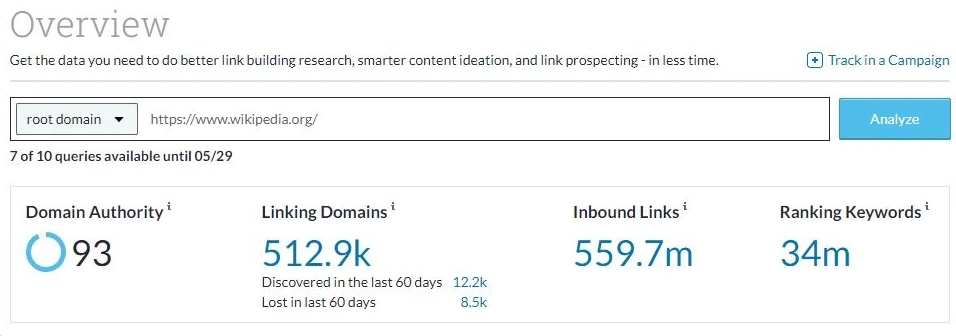
Page Authority is a 1-100 score from Moz predicting a specific page’s ranking potential. It considers multiple factors using machine learning to estimate the page’s backlink profile value.
Higher Page Authority indicates greater ranking ability. Unlike Domain Authority for entire sites, Page Authority is a single-page metric.
Both can inform how well pages or sites may rank but should be considered in the context of business and industry.
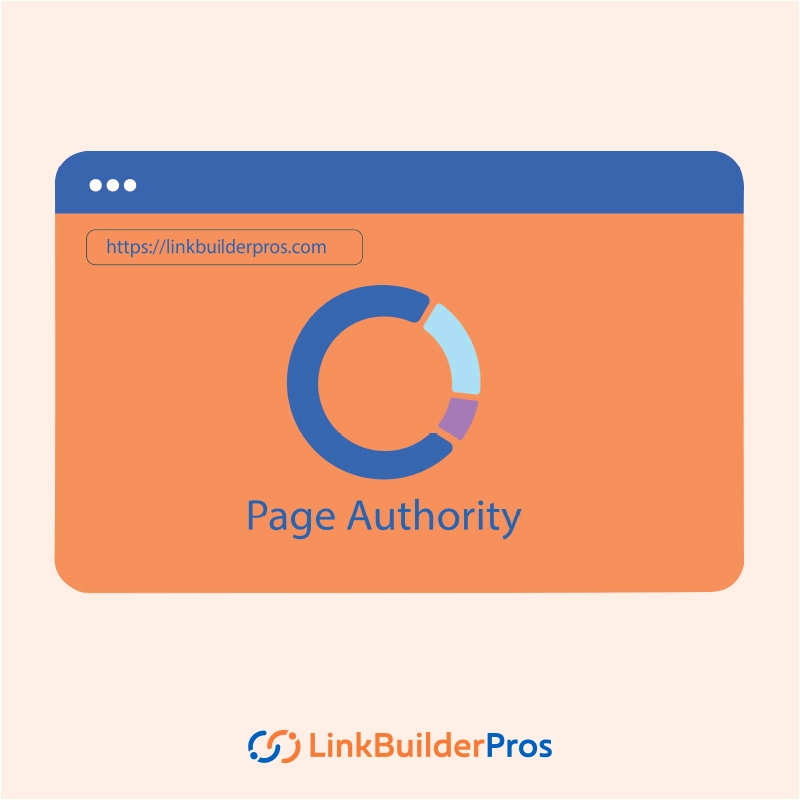
Do-follow links are standard hyperlinks that search engine crawlers can follow. They pass “link juice” to boost the rankings of linked pages by transferring authority.
Unlike no-follow links, do-follow links are valued for SEO since they accumulate link equity.
By default, links are do-follow unless manually set as no-follow. These pass-along links help pages rank higher and gain more backlinks.

No-Follow links contain code telling Google not to pass authority or equity to linked pages. They fight spam and ranking manipulation from bought or spammy links.
No follow is common in comments, social posts, and user-generated content. High authority sites like Wikipedia use no follow to maintain quality.
Nofollow doesn’t directly impact rankings but can drive traffic and branding. A mix of dofollow and nofollow links creates a natural link profile.

Natural links – also called organic links – are voluntarily created by website owners who find value in linking to content. They are not paid or artificially obtained.
Natural links occur organically when creators decide to link based on merit. Google highly values natural links since they are not sponsored and do not contain tracking.
For SEO, natural links are ideal as they authentically endorse content. They are key for healthy backlink profiles and boosting rankings. In short, natural links organically demonstrate the worth of content and are the best type of backlink for SEO.
The term “manual link” has two main meanings depending on context. In SEO, “manual link building” refers to active efforts to acquire backlinks through outreach, content creation, and other human-driven strategies.
The goal is to earn high-quality links to boost rankings. “Manual link” can also mean a hyperlink to user manuals or instructional guides, as seen in sites offering downloadable manuals.
Editorial links, also called earned links, are organic backlinks that are not traded, requested, or paid for. They result from quality content and marketing.
As genuine signals of value, editorial links are highly valued for improving rankings.
These links come naturally from publications or experts showcasing content. Editorial links are more impactful than paid or requested links.
Inbound links are another name for backlinks directed from external sites to your own site’s pages. They are important for SEO, determining authority, and ranking. They are highly valued for strengthening backlink profiles and boosting organic visibility and traffic.
Outbound links direct users from your site to external sites, providing additional value and resources. Inbound links, or backlinks, go from other sites to your own pages.
Outbound links demonstrate authority by citing credible sources and can impact SEO. But inbound links more directly affect SEO rankings, as search engines see them as endorsements of your content’s quality.
While outbound links give users more information, inbound links bring ranking authority and credibility from other sites.
Internal links connect pages within the same website or domain. They enable site navigation, establish informational hierarchy, and distribute link equity for SEO.
Internal links help Google understand a site’s structure and page relationships. Linking internally passes ranking power to other pages, potentially boosting their rankings. Internal links may be in menus or page content. They are vital for solid site architecture and improving organic traffic and search performance.
External links direct users to outside websites, providing additional resources and context.
Internal links connect pages within the same domain, helping with site navigation and passing SEO authority between pages.
While external links demonstrate credibility by citing other sources, internal links help Google index site structure and distribute ranking power.
A broken link, also known as a dead link, is a hyperlink that does not connect users to the intended website, typically due to deletion, relocation, or problems. Broken links provide a bad user experience and can harm SEO.
Toxic links are harmful backlinks from spammy or low-quality sites that can damage search rankings. They often originate from link schemes and shady SEO tactics.
Google may punish websites with a high number of harmful backlinks for manipulating results. Monitoring backlink profiles and removing harmful connections is critical for maintaining a healthy link profile and avoiding penalties.
Branded anchor text means using a website’s brand name or branded phrase as the clickable text in a link.
It’s considered a natural way to link that builds brand recognition. Branded anchors commonly cite sources or directly link sites.
Examples are “Ahrefs” or “Internal Link Juicer.” A mix of branded and non-branded anchors is ideal for a natural link profile.
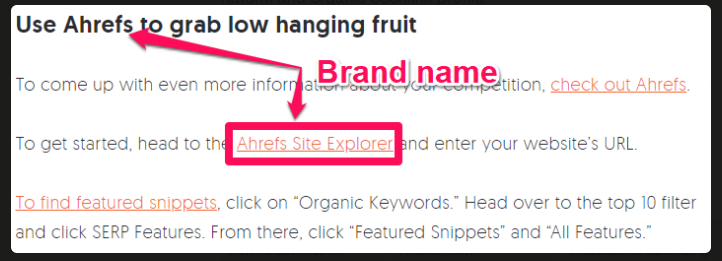
Exact match anchor text uses the exact target keyword as the hyperlink text, like “sleeper sofa” linking to a sleeper sofa page. While once common for SEO, too much exact match text now risks penalties.
A mix of anchor text types is better. Anchor text should descriptively indicate the content users will find on clickthrough. The focus should be on providing value for users, not just targeting keywords.

Generic anchor text uses non-specific words like “website” or “click here” to link between sites.
It is considered natural and links to homepages or brand names. Google sees generic anchors as organic links, passing equity smoothly.
Generic text is key for balanced anchor text, avoiding over-optimization risks. Diversifying anchors is important, so the generic text should be mixed with more descriptive phrases.
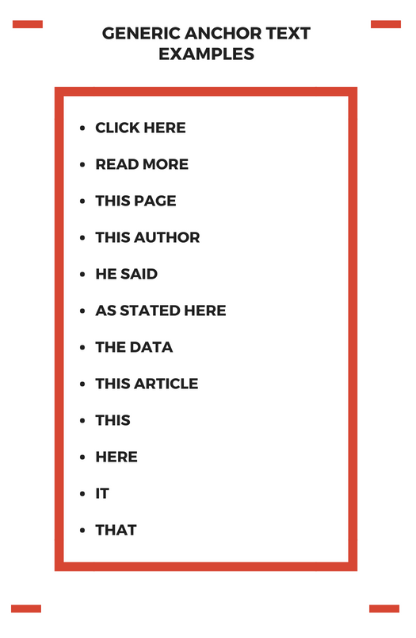
Contextual links are hyperlinks within text that connect to relevant content. They provide additional resources related to the surrounding text. Contextual links add value for readers by linking to pertinent information in context.
They tend to have higher clickthrough rates compared to other link types. Contextual links may connect internally or externally.
They are an important element of strong internal linking and can boost user experience.
The nofollow attribute tells search engines not to use a link for ranking purposes. It was created to stop spam comments on blogs.
While Google ignores nofollow links completely, other engines may still follow them but not count them for rankings.
Nofollow is commonly used for links you don’t want to endorse, like ads or user-generated content.
As of 2020, Google sees nofollow as a suggestion rather than a directive. Nofollow links don’t pass PageRank so they likely have little SEO impact.
The nofollow tag has been around a long time originally to fight comment spam. It’s wise to use nofollow on paid or unrelated links and to have a mix of nofollow and regular links to seem more natural.
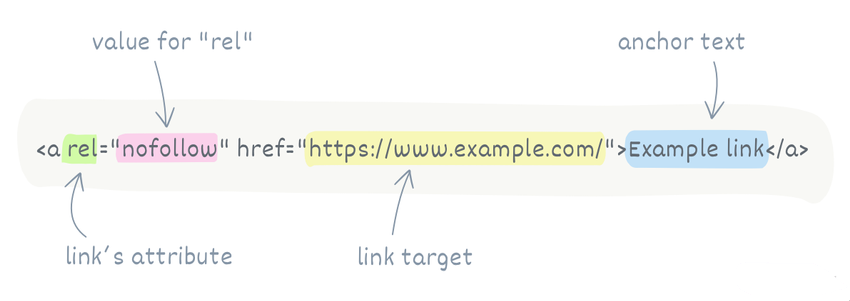
Link relevance means how closely a backlink connects to the content of the linked site. It’s an important factor in determining a link’s SEO value.
Relevance exists on a spectrum from highly relevant to slightly relevant. Google considers relevance when judging a site’s quality and authority.
Highly relevant links pass more SEO value, while less relevant links pass little or could even lead to penalties.
So it’s crucial in link building to get relevant backlinks in order to boost rankings and build trusted authority. The more relevant the links, the more SEO power they confer.
Link quality is the value and relevance of backlinks pointing to a website. High-quality links come from authoritative, relevant sources while low-quality links are from spammy or irrelevant sites.
Link quality is the key for SEO as Google sees quality links as signals of a site’s authority and relevance.
Factors like the linking domain’s authority, contextual relevance, and anchor text determine link quality.
Building high-quality backlinks by creating valuable content, reaching authoritative sites, and earning natural links is crucial for SEO success.
The focus should be on obtaining links from reputable sources closely related to the website’s niche and content.
Link status means how Google crawlers interpret tags and directives that determine if a link gets followed and indexed. A “follow” link gets crawled and can influence rankings while a “nofollow” may not. “Unverified” means the crawler couldn’t access the link.
Link relevance refers to how closely related a backlink is to the content of the site it links to. Highly relevant links are more valuable for passing SEO authority. Less relevant links pass little value and can even prompt penalties.
So link status (follow/nofollow) is about crawling directives while link relevance is about contextual appropriateness. Getting relevant links from reputable sources is crucial for building SEO value.
A link farm is a network of websites created solely to manipulate rankings through excessive internal cross-linking. The low-quality sites link to each other in order to artificially inflate importance and rankings.
Link farms aim to boost a site’s backlink profile through non-legitimate means. But this black hat technique is now less effective as search engines penalize link farms.
The focus should be on publishing high-quality content that earns genuine organic links, not on unethical, manipulative link-building practices.
Link farms demonstrate low value to Google and can lead to ranking decreases. Ethical SEO comes from producing great content that deserves reputable links, not quick schemes.
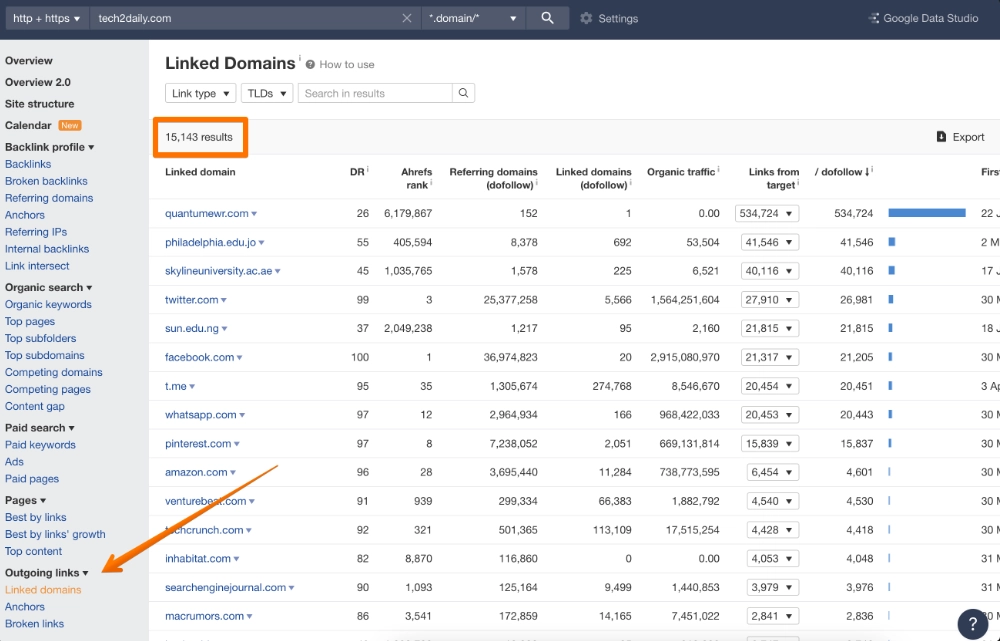
A link wheel is an unethical SEO technique involving a network of sites all linking to each other in a circular fashion. It aims to artificially boost a site’s importance by manipulating Google’s algorithms.
Link wheels try to exploit emotional triggers to attract links, shares, and backlinks. But this practice is considered a manipulative “black hat” tactic that Google actively penalizes.
While some claim link wheels can aid rankings, they provide only short-term gains through illegitimate means.
Instead, the focus should be on ethical SEO by building high-quality backlinks organically, not using schemes. Link wheels demonstrate low value and should be avoided in favor of legitimate SEO strategies based on great content.
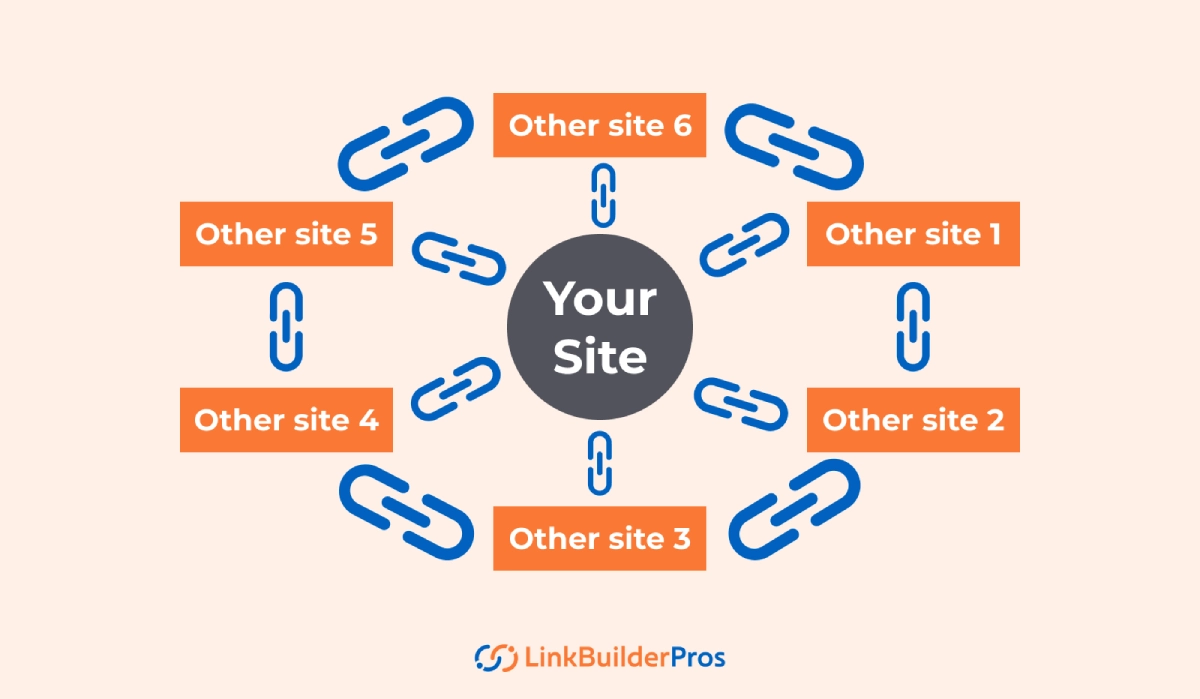
Link baiting is the practice of providing high-quality, valuable material with the goal of attracting backlinks from other websites.
Examples include infographics, guides, controversial topics, and tools. The goal is to produce content so useful that others naturally want to link to it, thus generating authoritative organic backlinks.
This legitimate SEO tactic helps increase rankings when done ethically. But link bait must offer genuine value, not just serve as spammy self-promotion.
The focus should be on providing truly interesting assets that happen to attract links, not just gaming the system.
Useful link bait that engages audiences can improve search performance if implemented carefully.
Link popularity is the number of backlinks referring to a website. Google sees a large number of high-quality backlinks as an indicator of popularity and importance.
Link popularity is measured by the quantity and authority of unique sites linking back. More incoming links from reputable sources suggest higher-quality content.
Link popularity used to have a direct impact on rankings. Now it is just one of many signals of relevance and authority algorithms consider.
However, building backlinks from trustworthy sites remains crucial for SEO. The goal is to ethically earn links to indicate expertise and boost rankings.
Link velocity refers to the rate a site gains new backlinks, usually measured per month. There are differing views on how link velocity impacts rankings.
Some believe faster link building leads to higher rankings, but others say relevance and quality matter more than speed.
Link velocity should be considered along with other factors. Setting realistic, individual benchmarks is recommended over chasing high velocity alone.
Google doesn’t officially recognize link velocity as a ranking factor. The focus should be on organically earning high-quality, relevant links at a natural pace for your site.
While monitoring velocity can be useful, quality and sustainability should be priorities over speed when building links.
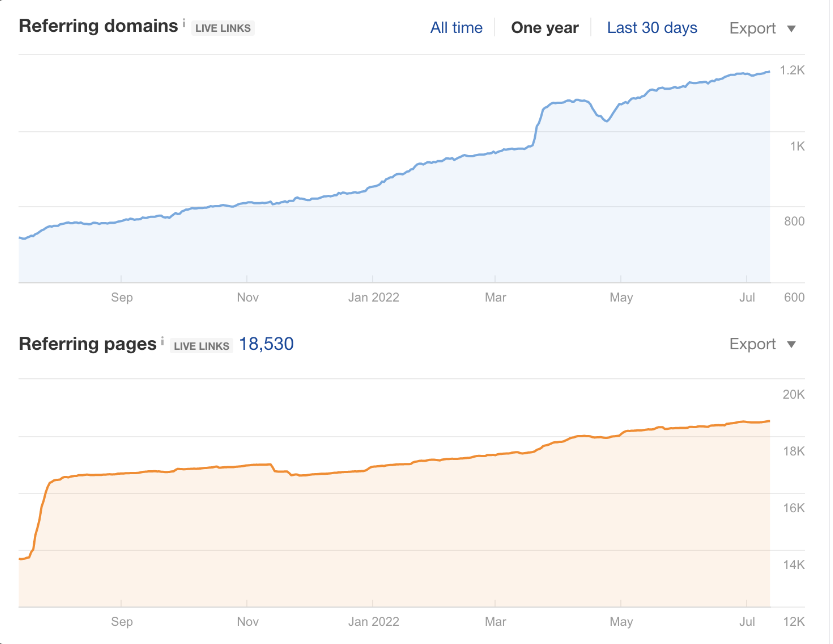
Link outreach is to contacting websites and influencers to request backlinks to your content. It involves identifying authoritative, relevant sites and reaching out through emails, DMs, etc. with persuasive, personalized pitches.
The goal is to convince them your content offers value to their audience and is worthy of being linked to. Done right, link outreach builds genuine connections and earns high-quality backlinks, which search engines see as votes of confidence.
This important SEO process requires research, personalization, and non-spammy communication focused on mutual value. Link outreach is about establishing relationships and value, not just acquiring links. It takes effort but the rewards of authoritative links and partnerships are invaluable.

Link earning is a white hat SEO technique that involves creating valuable, high-quality content that inherently attracts backlinks from others.
It aims to build credibility through content that is so useful that relevant sites naturally want to link to it.
Link farming, in contrast, is an unethical tactic using networks of low-value sites all linking to each other just to manipulate rankings.
Link earning earns links naturally while link farming aims simply to exploit algorithms. The focus should be on producing content worth linking to, not using manipulative shortcuts.
Link earning improves search performance through value and relevance. Link farming provides only short-term gains through illegitimate means.
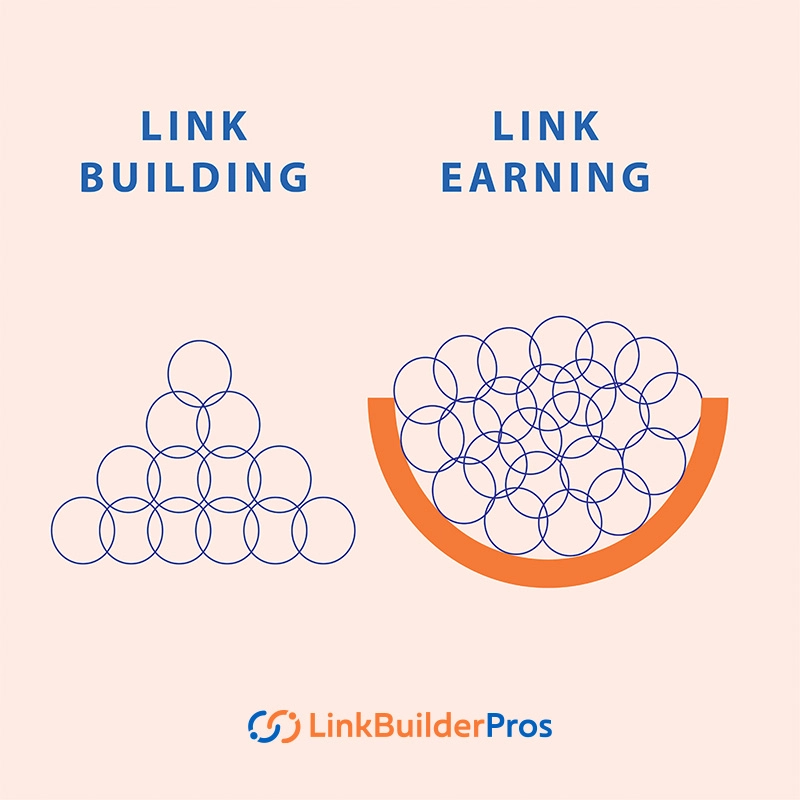
Link exchange, also called reciprocal linking, is when two sites agree to link back to each other to try to boost rankings. The goal is to improve link popularity through mutual cross-linking.
However, most experts don’t recommend link exchanges since Google discourages excessive reciprocal links as a “link scheme.” While some claim small-scale exchanges may aid performance, it’s risky and can be perceived as manipulative.
Focus is better spent on building links naturally through high-quality content rather than reciprocal arrangements.
There are differing views, but safer and more sustainable SEO comes from earning links genuinely, not trading them.
For long-term results, avoid excessive link exchanges and keep the focus on producing content truly worth linking to.
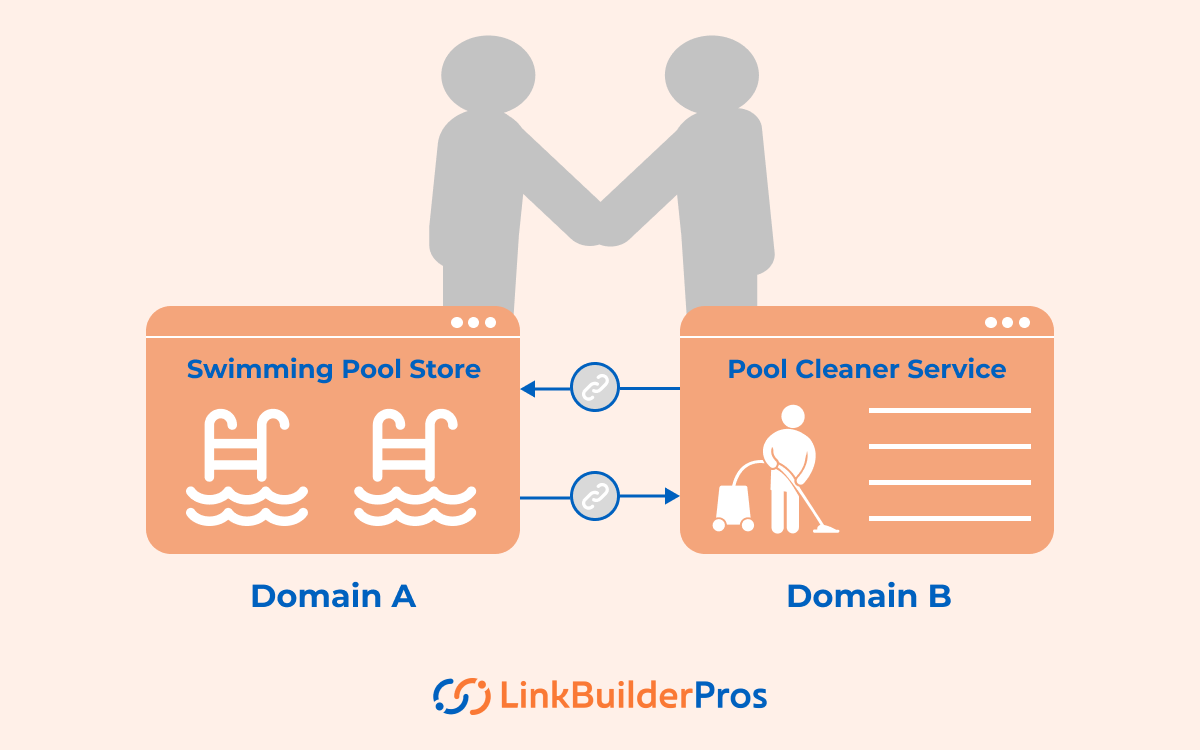
Link spam is when people try to cheat search engines by making a whole bunch of fake links to their website. They might use sneaky programs or link farms to do it.
The goal is to make their site seem more popular than it really is, so it shows up higher in search results. But search engines don’t like link spam.
If they catch a site doing it, that site could get kicked out of the search results completely! Moral of the story – don’t take shortcuts.
Focus on writing good stuff that people will want to link to naturally. That’s how you earn your place in the search rankings fair and square.
Link analysis is like playing connect-the-dots with data. It’s all about visually mapping out how different pieces of information are connected.
Think of it as having dots (nodes) representing specific data points and lines (links) showing how they’re related.
This method gives you a bird’s-eye view of large datasets, which allows you to spot patterns that might be invisible when just looking at rows and columns.
Intelligence analysts often use link analysis to understand connections between people, places, and events, but it’s also handy in other fields like computer security, search engines, and medical research.
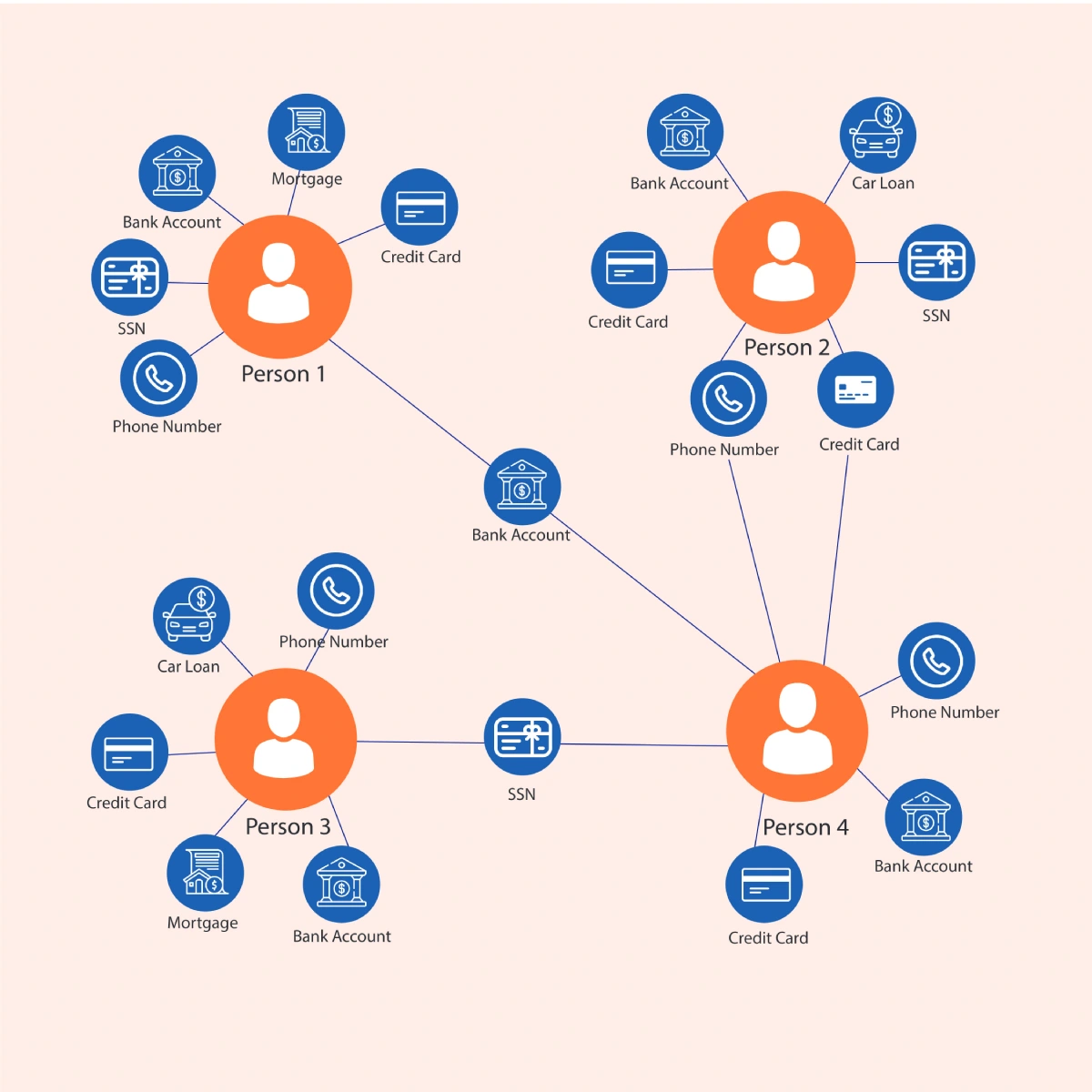
Link Detox is a handy tool that helps you get your website back in good standing with Google. See, google cares about the types of sites that link to your site. If too many shady or spammy sites link to you, it can actually hurt your SEO.
It uses a smart algorithm to scan all the links pointing to your site. It gives each link a “DTOXRISK” score so you can see which ones might be problematic. These risky links are called “toxic links.”
The tool makes it easy to identify and remove those toxic links. It’s kind of like taking out the trash – you get rid of the bad stuff weighing your site down. This keeps search engines happy and prevents your site from being penalized.
Link disavowal is a way to tell Google “please ignore these links to my site.”
It’s used when a website has sketchy or spammy backlinks that could hurt its ranking. Those bad links are like a black mark on your record.
To disavow links, you make a list of the icky links and submit it to Google through their Disavow Tool. This tells Google not to count those links when judging your site.
It’s important to only disavow as a last resort. You should try to remove bad links manually first. And be careful – disavowing too many links can also hurt your ranking.

Link disavowal is a process used in search engine optimization (SEO) to signal to Google that certain backlinks to a website should be ignored. This is typically done when a website has low-quality or spammy backlinks that could potentially harm its rankings.
You make a list of all the spammy or low-quality links pointing to your site and submit it through Google’s Disavow Tool. This tells Google not to count those links when evaluating your site’s ranking.
But you’ve got to be careful with the disavow tool – you don’t want to throw too many links under the bus or it can backfire. Use it as a last resort, after trying to clean up backlinks manually.
Disavowing links is like telling a little white lie on your resume to cover up a mistake – it works best in small doses!
Link prospecting is an important part of link building. It involves the identification of relevant websites and individuals to reach out to for the purpose of acquiring quality backlinks.
It is an essential first step in building a solid link strategy, as it helps in identifying sites to acquire links from and, equally important, sites to avoid.
Link prospecting is a hands-on process that requires thoughtful research and consideration, as it is vital to identify high-quality and relevant sites in a given niche.
Link sculpting is an old SEO trick to boost a website’s PageRank by directing link juice in sneaky ways. The idea is to control where PageRank flows by building specific types of links.Google disapproves of excessive link sculpting, considering it black hat cheating.
These days, focusing on great content and earning links organically is a much better strategy. Link prospecting to find relevant sites is ethical and effective.
Link analysis helps you understand relationships and patterns. So let link sculpting drift into the past. Build your backlinks the right way – through hard work producing content people want to naturally link to.
Reciprocal links are when two websites agree to link to each other, usually because they cover similar topics. The idea is that it’s mutually beneficial for their visitors.
Back in the day, reciprocal linking was seen as a smart SEO move to climb the search rankings.
But search engines have become aware of these deceptive techniques. Now reciprocal links won’t give your site a boost – and they could even lead to penalties if seen as manipulative.
The key today is earning links naturally by creating content so good that others want to link to you. Focus on quality over quantity.
Niche edits are a sneaky link building technique where you add a link to existing content on other sites instead of creating something new. You essentially piggyback on authoritative pages in your niche by inserting some extra text and a link back to your site.
The advantage is you can get the SEO boost from an established page without doing any heavy lifting. Companies sell these link inserts to people looking for quick and easy backlinks.
But be careful – niche edits walk a fine ethical line. Make sure whoever you buy from plays by the rules. Focus on quality sites and content relevant to yours. A few niche edits from trusted sources can work wonders, but avoid going overboard.
Guest posting is when you create content for another website in exchange for a backlink back to your own site. The process works like this: You find blogs or sites that are a good fit for your niche.
Pitch them an idea for a great post their audience would love. If they accept, you craft up some awesome content and submit it. And in return, you get a high quality backlink and referral traffic from their site.
When done right, guest posting is a win-win. You get exposure and SEO benefits, they get sweet free content. Just be sure to follow their rules and create stuff their readers genuinely value.
Don’t spam guest posts everywhere – focus on sites where you can provide real help to the community.
A backlink audit is like an annual check-up for your website’s links. You look under the hood to see what’s working, what’s not, and what needs a tune-up.
The goal is to evaluate the quality of links pointing to your site. You want to spot any toxic links that could hurt your site and find new opportunities to build valuable backlinks.
Use SEO tools like Ahrefs, Semrush, or Moz to get the full picture. See which links are sending you traffic, which are broken, and what anchor text they used.
It’s important for a healthy website. Just like going to the dentist to catch cavities early, a backlink audit helps nip problems in the bud. And it can reveal chances to strengthen your SEO that you may have missed.
Now that you are familiar with the different backlink terms, we believe you will be able to make the most of your SEO and link building campaign for a dominant online presence.